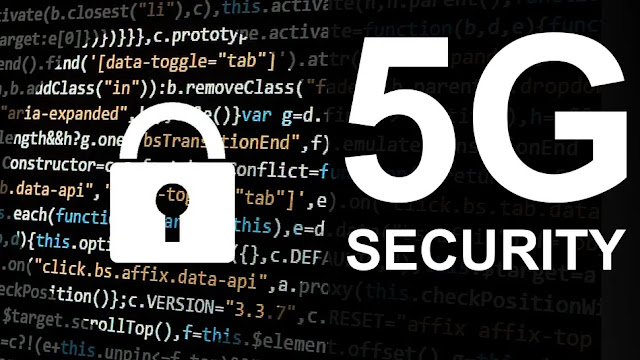How 5G Networks Impact Mobile Cybersecurity Risks
The arrival of 5G networks promises faster speeds, lower latency, and the ability to connect billions of IoT devices seamlessly. But with these benefits come new security challenges. As India accelerates its 5G adoption, understanding the cybersecurity implications becomes critical—especially for individuals and businesses dealing with mobile threats daily. If you're aiming to build a career in this rapidly evolving field, enrolling in a Cyber Security Course in Hyderabad can equip you with the skills to combat these risks effectively.
What Makes 5G Different from Previous Mobile Networks?
To appreciate the security implications of 5G, it’s essential to understand how it differs from 4G and earlier networks:
-
Speed and Bandwidth: 5G offers data speeds up to 100 times faster than 4G, enabling real-time connectivity.
-
Latency: The ultra-low latency of 5G enhances responsiveness, which is crucial for applications like autonomous vehicles and remote surgeries.
-
Massive Device Connectivity: 5G supports a vast number of simultaneous device connections, enabling IoT expansion at an unprecedented scale.
-
Network Slicing: This allows network operators to create multiple virtual networks within a single physical infrastructure—each optimized for different use cases.
While these features unlock innovation, they also present unique opportunities for cybercriminals.
Top 5 Cybersecurity Risks Introduced by 5G
1. Expanded Attack Surface
With millions of new devices—especially IoT gadgets—connected to 5G, the potential entry points for hackers multiply. Devices with outdated firmware or weak security configurations can act as gateways for cyberattacks, affecting entire mobile ecosystems.
2. Edge Computing Vulnerabilities
5G networks rely heavily on edge computing to process data closer to the source, improving speed and reducing latency. However, edge nodes often lack centralized security controls, making them prime targets for cybercriminals.
3. Supply Chain Risks
The hardware and software that power 5G infrastructure often come from a variety of global vendors. Each link in this supply chain could introduce vulnerabilities—whether through unpatched firmware, backdoors, or insecure APIs.
4. DDoS Attacks on Steroids
Due to the high bandwidth and low latency, 5G networks can amplify Distributed Denial of Service (DDoS) attacks. A compromised IoT device network can unleash a flood of malicious traffic that’s harder to mitigate and faster to execute.
5. Data Privacy Concerns
The speed and ubiquity of 5G make it easier to collect massive amounts of user data in real time. Without adequate encryption and access controls, this data becomes a treasure trove for hackers.
How Organizations Can Secure 5G-Enabled Mobile Environments
1. Zero Trust Architecture
Adopt a Zero Trust approach where no user or device is automatically trusted—even if it’s inside the network perimeter. Continuous authentication, identity verification, and role-based access are key components.
2. IoT Device Hardening
Ensure all IoT devices connected via 5G are secure by default. This includes changing default credentials, regularly updating firmware, and limiting network access to only essential services.
3. AI-Powered Threat Detection
With 5G generating massive data streams, traditional security monitoring falls short. AI and machine learning can help detect anomalies in real-time, flagging potential threats before they escalate.
4. 5G-Specific Penetration Testing
Standard pen-testing practices may not be sufficient. Organizations must simulate 5G-specific attack vectors to identify vulnerabilities unique to the new infrastructure.
5. Employee Training
Humans remain the weakest link in cybersecurity. Training your workforce—including mobile developers and IT staff—on 5G threats is essential. If you’re an aspiring security expert, now is the time to consider enrolling in an Ethical Hacking Course in Hyderabad to gain practical skills in identifying and mitigating these threats.
Key Areas Where 5G Security Will Matter Most
-
Healthcare: With remote diagnostics and connected medical devices, breaches could have life-threatening consequences.
-
Automotive: 5G will power vehicle-to-vehicle communication. A successful hack could lead to dangerous outcomes.
-
Smart Cities: Surveillance, utilities, and public safety systems connected via 5G are all potential targets.
-
Finance: Mobile banking apps and digital payment systems over 5G networks are prime cybercrime targets.
Conclusion
5G is a technological leap forward, but it brings a host of mobile cybersecurity risks that can’t be ignored. From increased attack surfaces to privacy vulnerabilities, individuals and organizations need to stay proactive. As 5G continues to evolve, cybersecurity professionals must stay ahead of the curve by adopting new technologies, strategies, and certifications.
For those looking to build or advance a career in this high-demand field, a Cyber Security Course in Hyderabad offers hands-on experience and up-to-date training. And if you're interested in practical offensive security techniques, an Ethical Hacking Course in Hyderabad can give you the toolkit to think like a hacker and defend like a pro.




Comments
Post a Comment